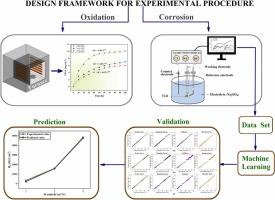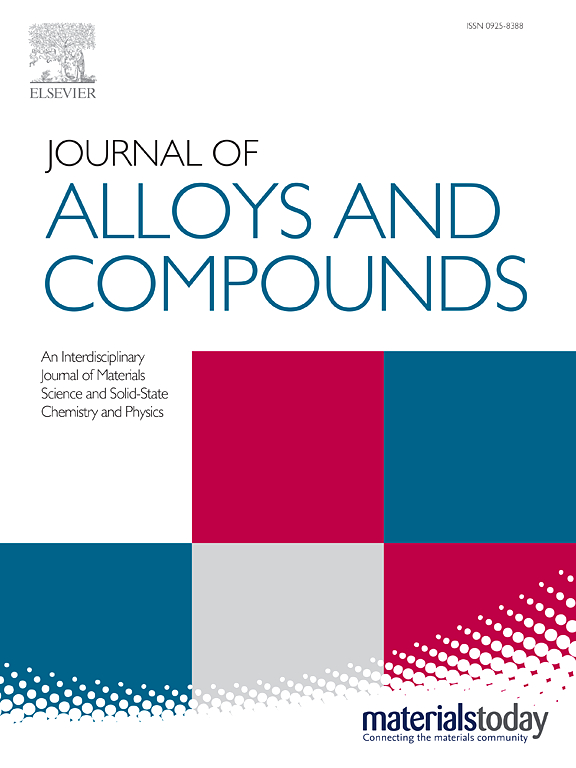Insights into the high-temperature oxidation and electrochemical corrosion behavior of Si alloyed TiAl alloys and the prediction of corrosion behavior using machine learning approaches
IF 5.8
2区 材料科学
Q2 CHEMISTRY, PHYSICAL
引用次数: 0
Abstract
This study investigates the oxidation and electrochemical corrosion resistance of at.% Ti-46Al, Ti-46Al-1Si and Ti-46Al-2Si alloys. Ti-46Al-2Si alloy presented the least tendency for high-temperature oxidation, followed by Ti-46Al-1Si and then Ti-46Al. This result indicates that Si addition plays a key role in enhancing oxidation resistance, which is characterized by the lowest oxidation rate constant and the constitution of a relatively denser and more adherent oxide scale that may serve as a barrier to the ingress of oxygen into the substrate. In the comparison of corrosion performance among all the alloys tested, the Ti-46Al-2Si alloy presented notable results, exhibiting the lowest corrosion rate (Rcorr) value of 0.1199 mm/year. According to the electrochemical impedance spectroscopy (EIS) results, incorporating Si yielded a raised phase maximum and a broadened phase angle. Mott-Schottky analysis indicates that the surface film developed on Ti-46Al-2Si alloy has the least defect density, indicating that the corrosion behavior of the alloy is influenced by the incorporation of Si in a positive way. This study also focuses on predicting the corrosion behavior of TiAl alloys by adopting machine learning (ML) approach. Machine learning algorithms including extra trees (ET), random forest (RF), CatBoost and decision tree (DT) have been successfully employed to predict the corrosion behavior of the alloys. The extra trees regressor model has the highest predictive accuracy for all alloys. Additionally, the current study reveals the potential of machine learning models to predict corrosion behavior.

求助全文
约1分钟内获得全文
求助全文
来源期刊

Journal of Alloys and Compounds
工程技术-材料科学:综合
CiteScore
11.10
自引率
14.50%
发文量
5146
审稿时长
67 days
期刊介绍:
The Journal of Alloys and Compounds is intended to serve as an international medium for the publication of work on solid materials comprising compounds as well as alloys. Its great strength lies in the diversity of discipline which it encompasses, drawing together results from materials science, solid-state chemistry and physics.
 求助内容:
求助内容: 应助结果提醒方式:
应助结果提醒方式:


